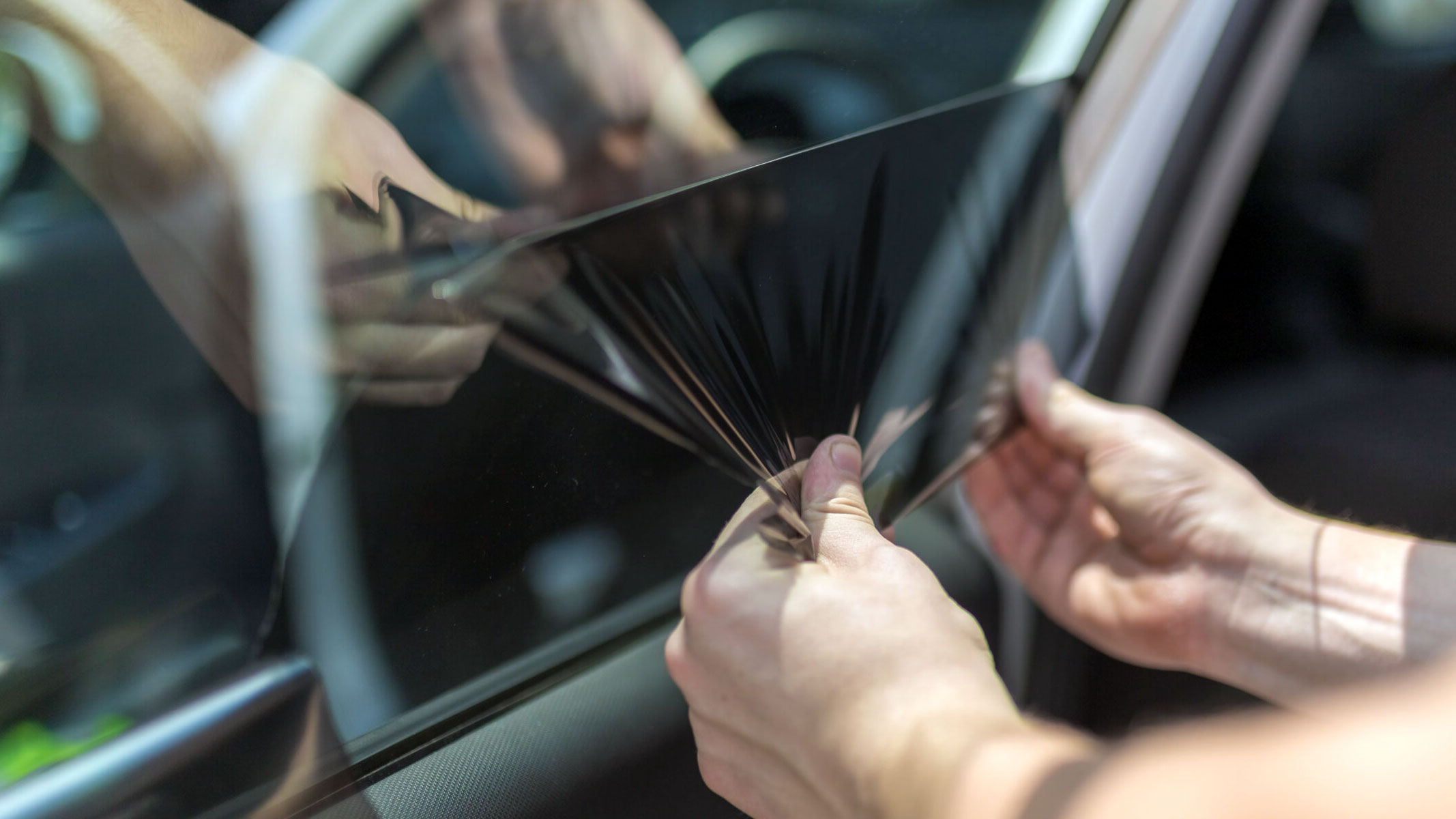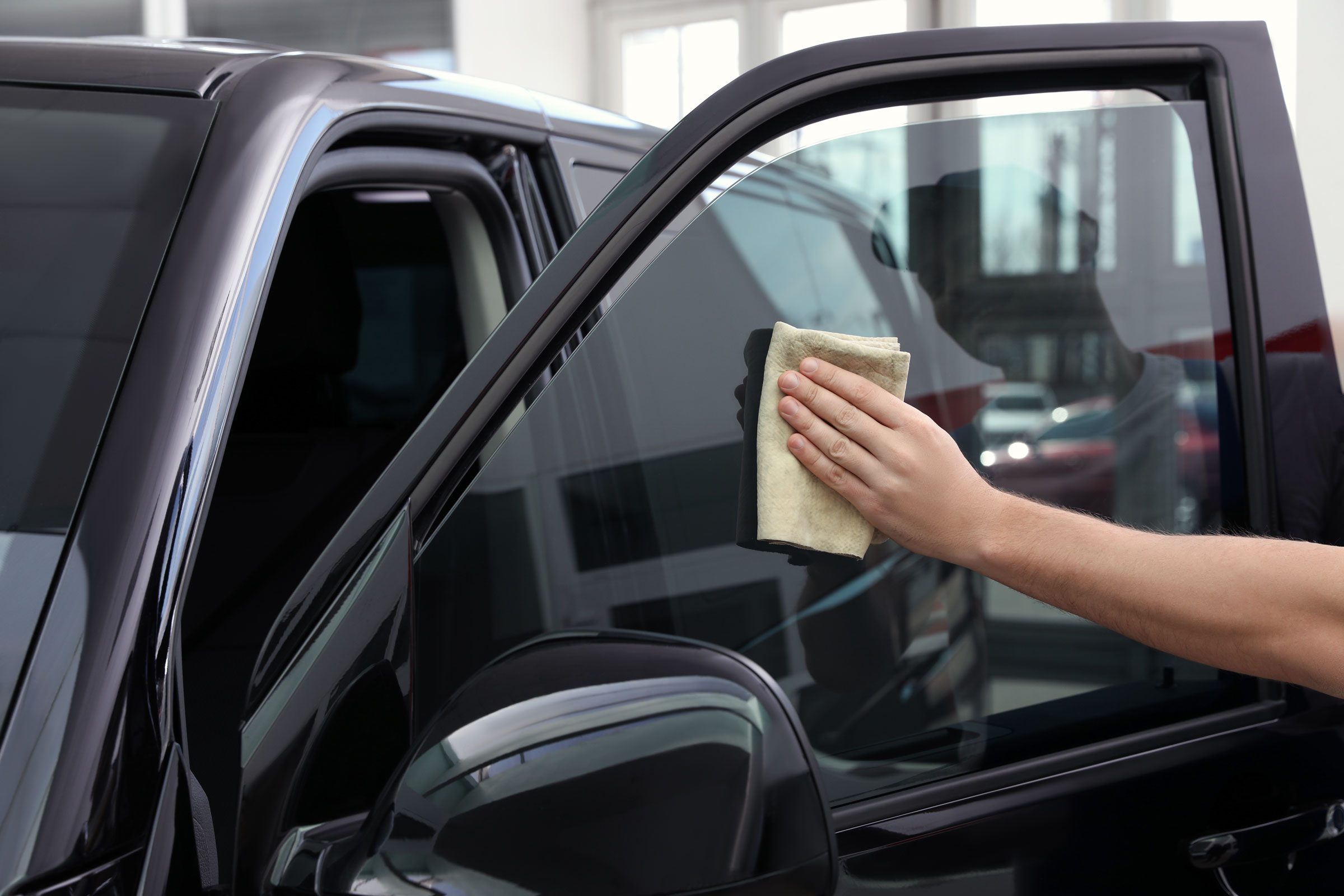To remove window tint from car windows, use a steamer or heat gun to loosen the adhesive, then carefully peel off the tint starting from the corners. Removing window tint from car windows can be a challenging task, but with the right techniques, it can be done effectively.
There are several methods that can be used to remove window tint, including using a steamer or heat gun to soften the adhesive and then carefully peeling off the tint. It’s important to be patient and work carefully to avoid damaging the windows during the removal process.
We will explore the best ways to remove window tint from car windows, providing step-by-step instructions for each method to help you achieve a successful outcome.
Peeling Method
Remove window tint from car windows easily with the peeling method. Gently peel away the tint film from the edge of the window using a sharp object or your fingers for a clean and adhesive-free result.
Sometimes, removing window tint from car windows can be a tedious task. However, the peeling method is one of the most popular and effective ways to get the job done. It involves removing the tint film by peeling it off carefully. This method requires patience and caution to prevent any damage to the window surface. Here are some steps you can follow to successfully remove window tint using the peeling method.
Using A Razor Blade
One way to initiate the peeling method is by using a razor blade. Here’s how you can do it:
- Step 1: Start by spraying a generous amount of soapy water on the window tint. This will help lubricate the surface and make it easier to slide the razor blade.
- Step 2: Take the razor blade and gently slide it under one corner of the tint film, making sure not to scratch the window. Slowly lift the edge of the film to create a starting point for peeling.
- Step 3: Once you have lifted the edge, quickly grip it between your fingers and start peeling it off. Be cautious and apply steady pressure to prevent the film from tearing.
- Step 4: Continue peeling the tint film slowly, working your way diagonally across the window. If the film becomes stubborn, you can reapply soapy water to soften the adhesive.
- Step 5: After completely removing the tint film, clean any residue or adhesive left on the window with a glass cleaner and a cloth.
Applying Ammonia Solution
Another effective approach to the peeling method is applying an ammonia solution. Follow these steps to remove window tint using this method:
- Step 1: Mix equal parts of ammonia and water in a spray bottle.
- Step 2: Spray the ammonia solution generously onto the tint film, ensuring it is evenly covered.
- Step 3: Cover the treated window with a plastic wrap to prevent the solution from drying out quickly. Leave it for several hours, allowing the ammonia to penetrate and weaken the adhesive.
- Step 4: After the waiting period, start peeling off the tint film using the razor blade or your fingers. Remember to work slowly and apply steady pressure to ensure the film comes off smoothly.
- Step 5: Clean any residue or adhesive left on the window with a glass cleaner and a cloth.
By following these methods, you can remove window tint from your car windows without causing any damage. Remember to exercise patience and caution throughout the process to achieve the best results and enjoy clear, untinted windows once again.

Credit: www.evercleartinting.com.au
Steam Method
When it comes to removing window tint from car windows, several methods can be used to tackle this task effectively. Among these methods, the use of a steamer is a popular choice due to its effectiveness in removing stubborn tint adhesive. Below, we explore the steam method in detail, including using a steamer and the effectiveness of steam in removing window tint.
Using A Steamer
Using a steamer is one of the most effective methods for removing window tint from car windows. This process involves using a specialized tool that emits steam to soften the adhesive beneath the tint film, making it easier to peel off.
Effectiveness Of Steam
The effectiveness of steam in removing window tint is remarkable. The high temperature of the steam helps to weaken the adhesive bonds, allowing the tint film to be removed without leaving behind sticky residue or damaging the window surface.
Adhesive Remover Techniques
Adhesive remover techniques are essential for effectively removing window tint from car windows. There are several methods to remove the sticky residue left behind after peeling off the tint film. Below are two effective techniques for removing adhesive from car windows:
Applying Vinegar Solution
Using a vinegar solution is a natural and cost-effective way to remove adhesive from car windows. The acetic acid in vinegar helps to break down the adhesive, making it easier to remove. To use this method, follow these simple steps:
- Mix equal parts of white vinegar and hot water in a spray bottle.
- Spray the vinegar solution onto the adhesive residue on the window.
- Allow the solution to sit for a few minutes to penetrate the adhesive.
- Use a razor blade or scraper to gently remove the softened adhesive.
- Wipe the window clean with a microfiber cloth.
Using Commercial Adhesive Removers
Commercial adhesive removers are specially formulated to dissolve adhesive residues without damaging the window surface. When using a commercial adhesive remover, it’s important to follow the manufacturer’s instructions to ensure safe and effective removal. Here’s how to use a commercial adhesive remover:
- Apply the adhesive remover to a clean, dry cloth or sponge.
- Gently rub the cloth or sponge over the adhesive residue, allowing the remover to penetrate the adhesive.
- Let the remover sit for the recommended time as per the product instructions.
- Use a razor blade or scraper to carefully lift off the softened adhesive.
- Wipe the window clean with a damp cloth to remove any residue.

Credit: www.way.com
Professional Removal Services
Need professional removal services for window tint on car windows? We’ve got you covered. Our experts will safely remove the tint using advanced techniques, ensuring a clean and seamless finish without damaging the glass. Trust us to restore your windows to their original clarity.
Benefits Of Professional Services
When it comes to removing window tint from car windows, many car owners prefer to leave the job to the professionals. There are several benefits to opting for professional removal services over DIY methods.
Cost Considerations
Before deciding whether to remove the window tint yourself or hire professionals, it’s important to consider the cost factors involved. While DIY methods may seem more cost-effective initially, there are a few things to keep in mind when it comes to cost considerations.
- Professional expertise: One of the key advantages of hiring professionals is their expertise in window tint removal. They have the necessary knowledge and experience to handle the process efficiently and effectively. This can help avoid potential damage to the windows or other parts of your car, which can be costly to repair.
- Quality of work: Professional removal services ensure a high-quality finish, leaving your car’s windows clear and free of residue. They have access to specialized tools and products that may not be easily available for DIY enthusiasts. This ensures that the job is done properly, without leaving any trace of the old tint.
- Time-saving: Removing window tint can be a time-consuming task, especially if you’re not familiar with the process. Professionals, on the other hand, are experienced and equipped to complete the job quickly and efficiently. This saves you valuable time that you can spend on other tasks or activities.
- Potential savings on fines or penalties: In some areas, driving with improper or excessively dark tinted windows can lead to fines or penalties. By opting for professional removal services, you ensure that your car meets legal requirements, potentially saving you from any unwanted financial repercussions.
Although professional removal services may involve an upfront cost, they offer several advantages that make them a worthwhile investment. Not only do professionals provide expert knowledge and expertise, but they also save you time and potential repair costs in the long run. Additionally, their high-quality work ensures that your car’s windows are left looking clean and clear, giving you peace of mind.
Diy Vs. Professional Removal
Choosing between DIY and professional removal for window tint from car windows is a common dilemma for many car owners. Let’s explore the pros and cons of DIY methods and discuss when to opt for professional help.
Pros And Cons Of Diy Methods
- Pros: Low cost, convenience, flexibility
- Cons: Time-consuming, labor-intensive, potential damage
When To Opt For Professional Help
Professional help is recommended when dealing with stubborn tint, lack of time, or if unsure of DIY methods.
Precautions To Take
To safely remove window tint from car windows, first, soak the film with soapy water and let it sit, then carefully peel the film starting from a corner using a razor blade or heat gun to soften the adhesive. Afterwards, clean the residue with a mixture of ammonia and water.
Regularly maintain your car windows to avoid the need for tint removal.
Protecting The Glass Surface
Ensure to cover the glass with protective paper to prevent scratches.Proper Ventilation
Keep the area well-ventilated to avoid inhaling harmful fumes.Using protective gloves can shield your skin from harsh chemicals.Place tarps under the car to catch debris and tint remnants.Avoid direct skin contact with chemical solutions to prevent irritation.Summary
Taking precautions mitigates risks when removing window tint.
Credit: www.familyhandyman.com
Conclusion
Removing window tint from car windows can be a daunting task, but with the right approach, it can be done effectively. From using heat and scraping tools to applying ammonia or vinegar solutions, there are several methods available. However, it’s crucial to exercise caution and follow safety guidelines throughout the process.
By following these tips and being patient, you can successfully remove window tint and restore the clarity of your car windows. Remember, it’s always best to consult a professional if you’re unsure or uncomfortable with the process.


